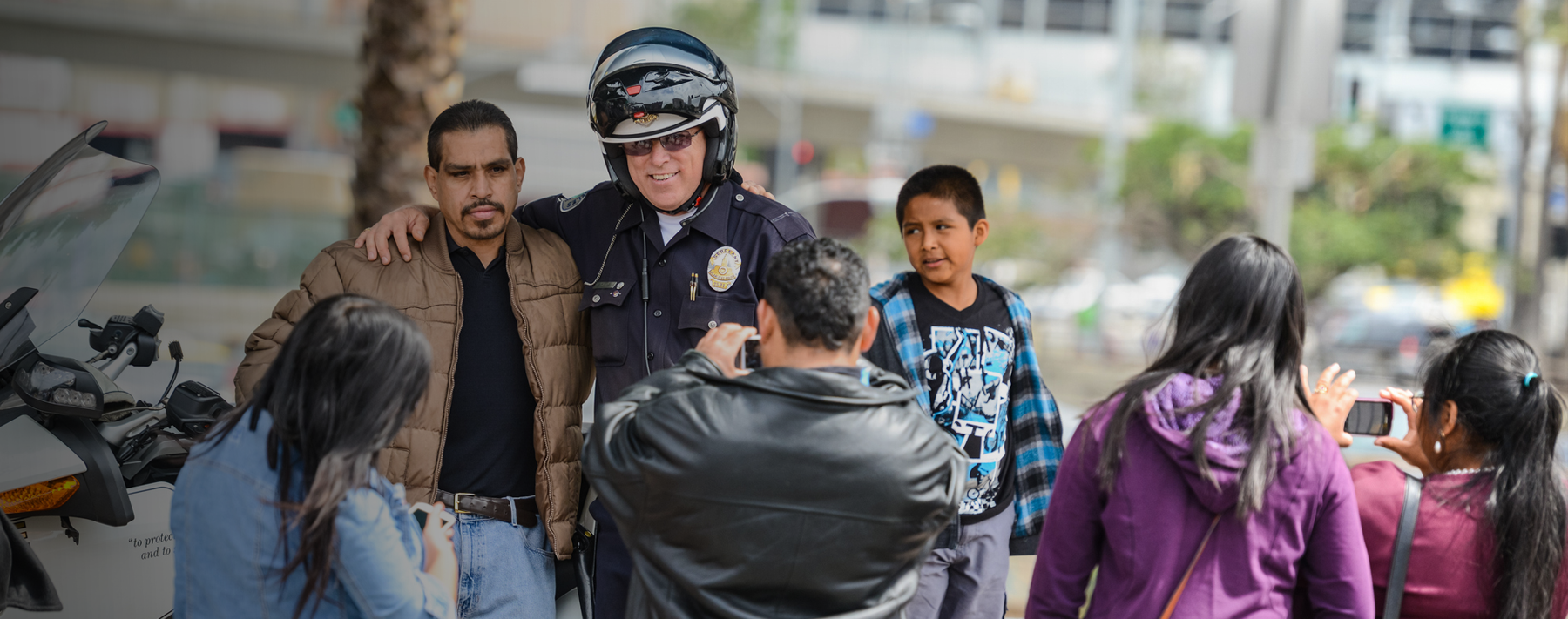In the past two years, 110 law enforcement officers were shot and killed, according to the Officer Down Memorial Page. In fact, 2016 was one of the few years where gunfire deaths exceeded traffic-related officer fatalities. In 2017, the number of officers killed by gunfire equaled the number killed in traffic incidents.
This is not to say we should take the focus off safe driving habits such as the Below 100 tenets “Watch your speed” and “Wear your belt.” Many traffic-related officer fatalities are completely preventable and law enforcement agencies should focus on the “low-hanging fruit”—simple actions that can have a dramatic impact on officer safety.
But obviously gunfire deaths deserve our attention as well. Understanding the circumstances that lead to officers being shot and killed is the subject of “Making It Safer,” a report published in December by the National Law Enforcement Officers Memorial Fund (NLEOMF) and the Department of Justice Community Oriented Police Services (COPS). The report analyzes 1,016 line-of-duty deaths (LODDs) that occurred between 2010-2016.
One disturbing trend within these statistics is the increase in the number of ambushes against officers. The report notes, “In 2016, the United States law enforcement community saw a dramatic spike in the number of ambushes against officers who were targeted specifically because they were uniformed police officers or deputies. All told, 81 officers were killed in these horrific assaults between 2010-2016 … The assassination of peace officers has been a concern for several years, but it has been over two decades since the number of ambushes of police officers exceeded 20 such killings in one year.”
Within the analysis is an equally disturbing finding: the connection between domestic incidents and police ambushes.
The Dangers of Domestic Incidents
A previous report from NLEOMF/COPS revealed what many officers already knew to be true: Domestic incidents are some of the most dangerous calls law enforcement officers respond to. The more recent report confirms this finding: 29 percent of the fatalities studied happened during calls related to domestic disputes and domestic-related incidents. The next-highest category of calls were “disturbance” at 13 percent and “man with a gun” at 10 percent. “Domestic issues are the main factor or undercurrent that runs through the fatal encounters that were analyzed,” the report’s authors note.
Why are domestic incidents so dangerous? Emotions run extremely high during such calls. The people involved are often desperate and conflicted, and alcohol or drugs may be a factor. The report also acknowledges poor information sharing and a lack of coordination between responding officers as factors. But the authors focus in on something else: the fact that officers are frequently dispatched alone or respond alone to such calls until backup arrives.
“Several of the officers killed were alone when they responded to the call, having been dispatched alone or not waited for their backup,” the authors note. “Whenever possible, agencies should ensure that calls for service involving a domestic-related matter, such as ‘Civil Protection orders, Protection from Abuse orders’ or ‘Assist with Clothing’ calls not be handled by a single officer … One officer will never be adequate to administer the call appropriately. At least two officers are necessary to separate witnesses, control suspects, manage the scene and monitor affected family members who often attack officers as they make arrests or escort parties out of the residence.”
Domestic Incidents and Police Ambushes
While the dangers of domestic calls should come as no surprise to officers and agencies, the connection between ambush and domestic calls is likely less well known.
When we think of ambushes, we think about situations where officers are attacked when sitting in their patrol cars—or, as in the case of two Gilchrist County (FL) Sheriff’s Office deputies in April, shot while eating at a restaurant.
But the NLEOMF researchers found that police officers are also being ambushed while responding to domestic incidents. “Responding to a call for service was the most common circumstance in ambush cases, accounting for 25 out of the 81 cases examined,” the report notes. “The call types varied widely but Domestic Dispute was the call or underlying cause in six of the responses that culminated with an officer(s) being ambushed.”
What qualified those six incidents as ambushes? The officers were shot from a distance, before ever contacting the suspect, or getting near the residence. In the six incidents, the reported distance from which the officer was shot was over 50 feet.
“This represents a change from the former report, in which 65 percent of incidents occurred in the premises and there were no indications of officers being shot from a distance,” the authors note. They also note rifles were the predominant weapon used in these incidents, in contrast to the previous report, in which handguns accounted for 75 percent of officer fatalities at domestic incidents. Clearly, the ability of a suspect to accurately shoot an officer from a distance increases the danger involved in an already difficult response.
The Takeaways
Simply being aware of the connection between ambush and domestic incidents can increase officers’ situational awareness. But the NLEOMF researchers are quick to note, “More must be offered to law enforcement than the stale admonishments, ‘Be vigilant!’ and ‘Constantly be aware of your surroundings.’ Officers cannot remain on high alert throughout an entire shift, nor is it reasonable or practical for them to approach every situation, call or contact as though they are going to be assaulted.”
It’s a problem without an easy solution, but the authors do point to some strategies to consider, including:
- Whenever possible, do not send officers alone. Officers who are dispatched alone should wait for backup if practicable. “Fellow officers, supervisors and dispatchers who become aware of officers handling calls without waiting for their assistance must address this. Supervisors must counsel their subordinates, take proactive steps and reinforce training and adherence to policy,” the authors note.
- Share information among responding officers and coordinate a plan of approach.
- Come in silent, without sirens. Avoid approaching within direct line of sight and stop to scan the area before making contact. If possible, take a moment to listen to the sounds coming from inside the residence.
- Train dispatchers to inquire whether the suspect is outside the location where the call is originating or may be likely to move outside. Other important information to gather and share with officers includes whether drugs or alcohol are a factor, whether there are weapons in the home, and the suspect’s criminal history or prior weapons charges. Dispatchers should also make regular checks during the call to ensure officer welfare.
- Equip officers with night vision goggles. “Although expensive and not a common piece of issued equipment, agencies should consider the use of night vision equipment when responding to and evaluating inherently dangerous calls for service,” the authors note. They cite a recent domestic incident in which a deputy wore night vision goggles as he approached the residence, allowing him to spot a man with a rifle who was attempting to ambush the officers. Obviously equipping all officers with night vision goggles is prohibitively expensive for most departments, but the idea stresses the need for agencies to think creatively and deploy all available resources.
Domestic incidents will always be dangerous. The possibility that responding officers may also face the threat of ambush makes such calls even more challenging—and underscores the need for training and supervision to minimize the dangers as much as possible.



